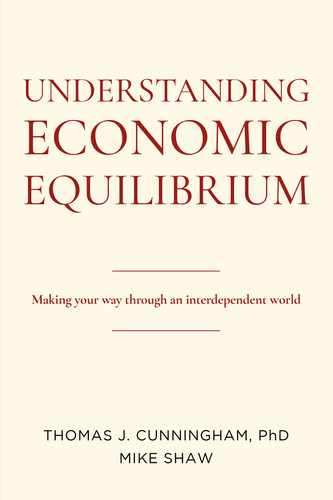Baumol Cost Disease: The Relationship Between Wages and Productivity
As we have seen, increases in productivity increase worker output, which in turn leads to potentially higher wages divided among more people and lower costs. It is how economies move forward. But there are some industries, in particular the live arts, where productivity gains aren’t possible.
Consider a string quartet. Four people take the same amount of time to play a Bach fugue as when he wrote it in the early eighteenth century. You might be able to fit more people into a theater to hear it, but little else has changed. The pianist at Carnegie Hall playing a Beethoven piano concerto is no more productive than the pianist who played it when the Hall opened in the 1891. We have seen refinements in recording that have resulted in some productivity gains by distributing the music to large populations, but there have been no such gains for live performances—and not just music, but other performing arts, like dance and drama.
A Powerful Tool
In relative terms, the costs of live art are increasing because productivity everywhere else is driving prices down. The lively arts suffer the Baumol Cost Disease, named for William Baumol who developed the theory in the 1960s with William Bowen. Their concept is heralded as a powerful tool for understanding the modern economic world.
Baumol’s intent was to better understand the economics of the arts, recognizing that symphony musicians weren’t getting any more productive, but were making a lot more money than musicians playing the same pieces a hundred or so years earlier. Despite the lack of increased productivity, arts organizations had to raise wages to attract and retain the best musicians. If producers and facilities wanted quality performers, they had to offer wages that reflected the existing standard of living. And if increasing costs meant that live performances continued to grow relatively more expensive with no productivity enhancements, they had to charge more for tickets.
Continuing Rise in Prices
Baumol recognized that because you can’t make the performing arts more productive, relative and real prices to attend performing arts events will continue to rise. In “real” terms, prices associated with live arts events have to grow faster than inflation.
The Baumol Cost Disease applies to other services, if idiosyncratically: some personal services, though typically one-offs, like haircuts and manicures, some forms of coaching, and other services that are essentially delivered one-on-one and cannot significantly benefit from automation. But we consider it particularly relevant to the performing arts because we think of the performing arts as a particularly vital part of our society. It is disturbing to see that live performances will continue to grow more expensive, if easy to understand why.
From musicians’ perspective, the commitment and training associated with developing musical talent is much the same as it always has been as the real costs increase. Even if you’re thinking casually about developing talent, costs are rising. Playing piano for the hell of it is getting more expensive as alternative uses of your time become more valuable.
Pandemic Acceleration
COVID-19 emphasized the significance of the theory and its implications. Broadway stages and Carnegie Hall are going to survive; they are as essential as arts venues can be considered. But most community arts companies rely on donors to support their activities. COVID-19 shut those activities down but it didn’t completely eliminate the costs of maintaining those organizations. It was hard to convince fans to pay for music they weren’t hearing or donors to contribute to organizations that weren’t putting on performances. And when those community organizations and facilities reopened, they had to charge even higher ticket prices and face even greater challenges to recapturing their audiences.
Most important to understanding the Baumol Cost Disease is that there is nothing we can do about it. Some things are going to be increasingly expensive. We need the arts; they are fundamental to our existence. Arts organizations will have to beg for more and more money every year. Nonprofits in other fields that compete with the performing arts for funding may be able to achieve economies of scale and lower average costs, but Swan Lake will take the same number of dancers and rehearsals as when Tchaikovsky drew it up.
Takeaways
• For some industries, in particular the live arts, productivity gains aren’t possible.
• Baumol Cost Disease: In relative terms, the costs of live art are increasing because productivity everywhere else is driving other prices down.
• In “real” terms, prices in these sectors have to grow faster than inflation. Because you can’t make the performing arts more productive, relative and real prices to attend performing arts events will continue to rise.
Equilibrium
The Baumol Cost Disease is an example of the mechanics of equilibrium in the real world. The cost of attending live performances is going up in real terms, not because of some failure of the live performance industry, but because of productivity enhancements in essentially all other industries. Baumol’s insight was that performing arts are stuck in terms of productivity, while almost everywhere else the output per worker has gone up. Increasing the standard of living for performers so they don’t seek alternative occupations can’t be the result of making the performers more productive, so it must come from higher real prices to attend their events.
